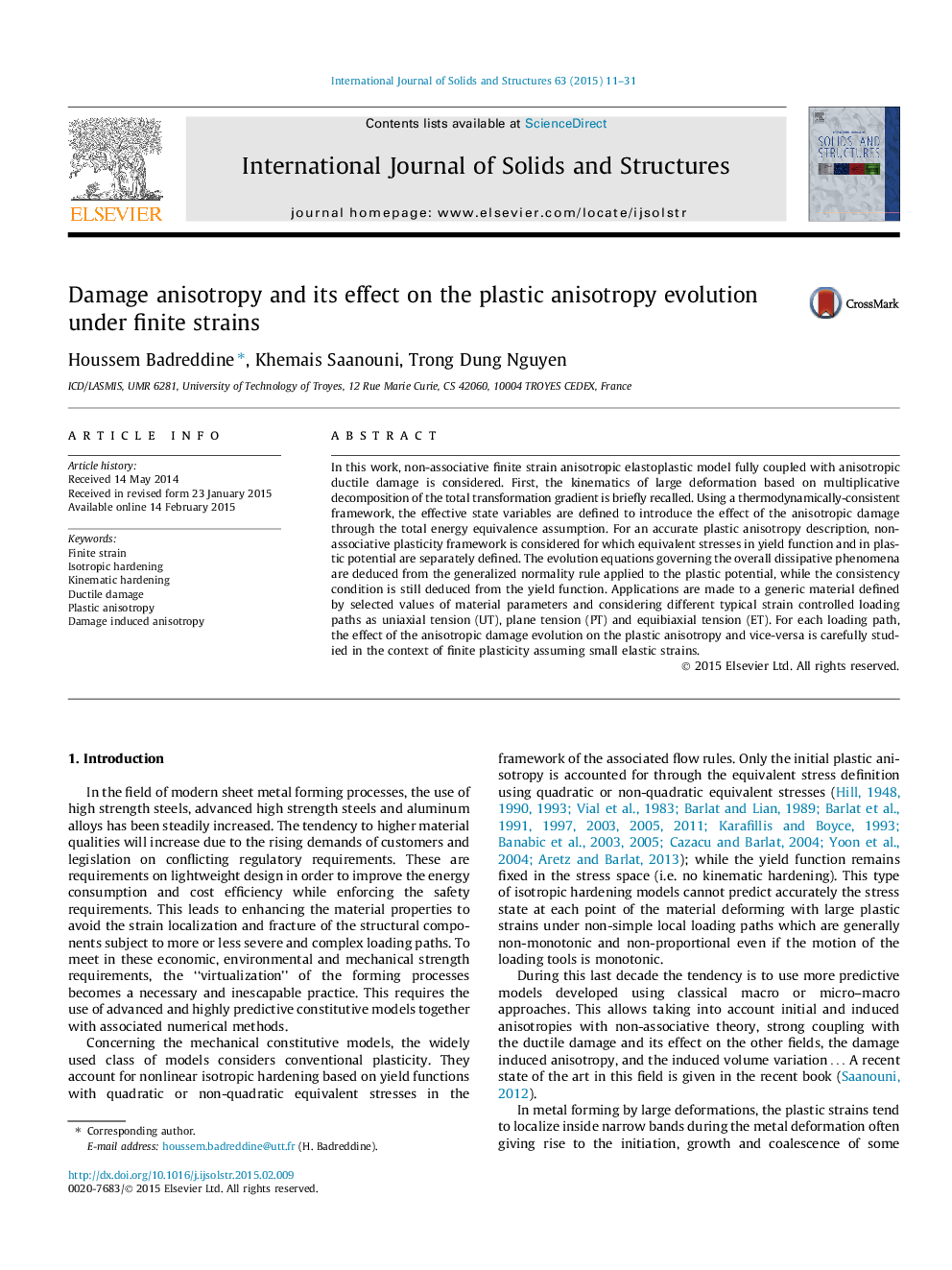| Article ID | Journal | Published Year | Pages | File Type |
|---|---|---|---|---|
| 277334 | International Journal of Solids and Structures | 2015 | 21 Pages |
•The anisotropic ductile damage is described by second-rank tensor.•The anisotropic damage effect is introduced through the equivalent total energy assumption.•Non-associative plasticity framework is considered.•The damage anisotropy induces an important change on the shape of the iso-damage envelop.
In this work, non-associative finite strain anisotropic elastoplastic model fully coupled with anisotropic ductile damage is considered. First, the kinematics of large deformation based on multiplicative decomposition of the total transformation gradient is briefly recalled. Using a thermodynamically-consistent framework, the effective state variables are defined to introduce the effect of the anisotropic damage through the total energy equivalence assumption. For an accurate plastic anisotropy description, non-associative plasticity framework is considered for which equivalent stresses in yield function and in plastic potential are separately defined. The evolution equations governing the overall dissipative phenomena are deduced from the generalized normality rule applied to the plastic potential, while the consistency condition is still deduced from the yield function. Applications are made to a generic material defined by selected values of material parameters and considering different typical strain controlled loading paths as uniaxial tension (UT), plane tension (PT) and equibiaxial tension (ET). For each loading path, the effect of the anisotropic damage evolution on the plastic anisotropy and vice-versa is carefully studied in the context of finite plasticity assuming small elastic strains.
